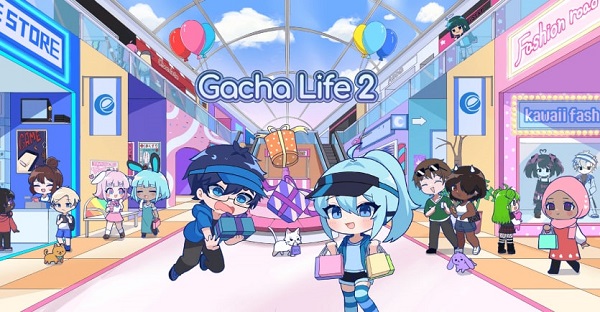Gacha Life, created by Lunime, is a mobile game that has garnered a vast following due to its engaging avatar customization and social features. Despite its popularity, the game’s gacha mechanics—where players spend in-game currency or real money to receive random virtual items—raise serious concerns about player spending behavior. This article delves into the specific issue of how gacha mechanics influence spending habits, particularly focusing on compulsive behaviors and financial implications. By examining these effects, we aim to provide a comprehensive understanding of the challenges associated with gacha systems in Gacha Life.
The Mechanics Behind Gacha Life’s Monetization

Gacha Life incorporates a gacha system, a feature derived from Japanese arcade games where players use virtual or real money to obtain random rewards. In Gacha Life, this involves spending the in-game currency, which can be purchased with real money, to participate in randomized draws for items, outfits, or characters. The core of this system is randomness; players have a chance to get rare items but cannot guarantee specific outcomes.
This randomness is designed to keep players engaged and coming back for more. The thrill of potentially receiving a rare or exclusive item encourages frequent spending. The game’s revenue model relies heavily on this mechanic, creating a continuous cycle of expenditure for players who seek to complete their collections or enhance their avatars.
Understanding Compulsive Spending in Gacha Systems
Compulsive spending, driven by gacha mechanics, is a significant concern in Gacha Life. The gacha system often mirrors the mechanics of gambling, where the anticipation of rewards and the unpredictability of outcomes can lead to excessive spending. Players may find themselves repeatedly purchasing in-game currency to participate in gacha draws, hoping to obtain the desired items.
The psychological concept of “intermittent reinforcement,” where rewards are given unpredictably, is central to understanding this behavior. Players experience occasional wins among many losses, which can lead to continued spending in hopes of achieving the next win. This mechanism exploits natural human tendencies towards risk-taking and reward-seeking, which can result in compulsive behavior.
The Financial Impact on Players

The financial impact of gacha mechanics in Gacha Life can be substantial. Players may spend significant amounts of money on in-game currency to participate in gacha draws, with no guarantee of receiving the desired items. This can lead to unexpected and considerable financial expenditure, especially if players are not mindful of their spending limits.
In extreme cases, players may spend more than they can afford, leading to financial strain. The game’s design, which encourages frequent and spontaneous purchases, can exacerbate this issue. The ease with which players can purchase currency and the constant availability of new items contribute to ongoing spending and potential financial problems.
Impact on Younger Audiences
Gacha Life’s primary audience includes children and teenagers, who are particularly vulnerable to the influences of gacha mechanics. Younger players may lack the financial literacy and self-control necessary to manage their spending effectively. The game’s colorful, appealing design may further obscure the financial risks associated with gacha draws.
Parents and guardians often face challenges in monitoring and controlling their children’s spending within the game. Without clear communication and parental controls, children may make frequent in-game purchases without fully understanding the financial implications. This can lead to unexpected charges and financial difficulties for families.
Psychological and Emotional Effects
The psychological and emotional effects of gacha systems are significant. Players may experience a range of emotions, from excitement and satisfaction when obtaining rare items to frustration and disappointment when the draws do not yield desirable outcomes. These emotional highs and lows can drive further spending as players attempt to alleviate negative feelings or achieve a sense of accomplishment.
The emotional investment in gacha draws can lead to a cycle of hope and disappointment, reinforcing compulsive behavior. The excitement of potential rewards, combined with the occasional success, can make it difficult for players to recognize the negative impact of their spending habits.
Ethical Considerations and Industry Standards

The ethical considerations surrounding gacha mechanics are increasingly scrutinized by industry observers and consumer protection groups. Critics argue that gacha systems can exploit vulnerable players, particularly minors, by encouraging compulsive spending and creating a gambling-like environment.
In response to these concerns, some regulatory bodies and industry groups are advocating for stricter standards and guidelines. Measures such as clear disclosure of odds, spending limits, and parental controls are being proposed to address the ethical issues associated with gacha mechanics and protect players from financial harm.
Regulatory Measures and Regional Differences
Different regions have implemented various regulatory measures to address the concerns related to gacha systems. For instance, Japan, where gacha mechanics originated, has established regulations to ensure transparency and prevent excessive spending. These regulations require game developers to disclose the odds of obtaining specific items and limit the frequency of gacha draws.
Other countries are beginning to adopt similar measures. In the European Union and the United States, there is increasing pressure on game developers to provide more transparency and implement safeguards to protect players. These regulatory efforts aim to create a more balanced and fair gaming environment, reducing the potential for harm associated with gacha mechanics.
Transparency and Informed Decision-Making

Increasing transparency within gacha systems is a crucial step towards mitigating the negative impacts of gacha mechanics. Providing players with clear information about the odds of obtaining specific items can help them make more informed decisions and understand the likelihood of success in gacha draws.
Developers can also implement features that allow players to set spending limits or provide options to opt-out of gacha draws altogether. By offering these choices, developers can support responsible spending and help players manage their in-game purchases more effectively.
Player Advocacy and Community Responses
The Gacha Life community has been active in addressing the issues associated with gacha mechanics. Player advocacy groups and online communities have raised awareness about the potential risks and challenges of gacha systems. These efforts include educating players about responsible spending and pushing for changes in game design and regulation.
Community responses also include organizing petitions and campaigns to advocate for more ethical practices in game development. These grassroots efforts play a vital role in influencing industry practices and driving improvements in how gacha systems are implemented.
Looking Forward: Alternatives to Gacha Mechanics
As the debate over gacha mechanics continues, developers are exploring alternative monetization strategies that do not rely on random draws. These alternatives include straightforward purchase options, subscription models, and in-game currencies that can be earned through gameplay.
By adopting these alternatives, developers can offer players more predictable and controlled ways to engage with their games. This shift can address some of the ethical concerns associated with gacha systems and promote a healthier gaming environment that prioritizes player well-being.
Conclusion
The gacha mechanics employed in Gacha Life present significant challenges related to player spending behavior, particularly concerning compulsive spending and its financial implications. The game’s design, which leverages randomness and emotional highs, can lead to excessive expenditures, especially among younger audiences. Addressing these issues requires a multi-faceted approach, including increased transparency, ethical considerations, and exploring alternative monetization strategies. As the gaming industry continues to evolve, prioritizing player welfare and implementing responsible practices will be essential for creating a balanced and fair gaming experience.


